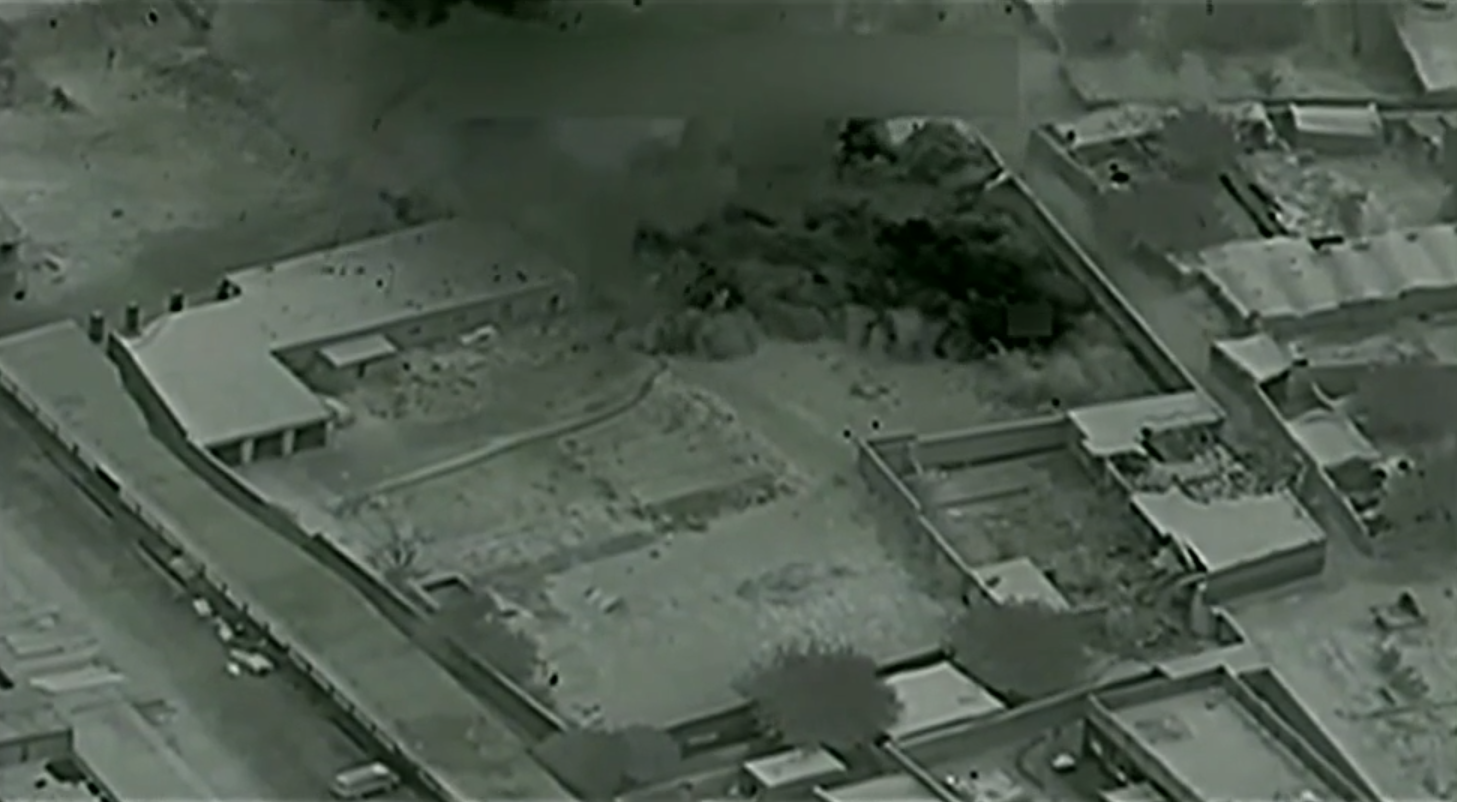
This screenshot of a video provided by US Forces-Afghanistan shows an airstrike on a Taliban drug-producing facility in Helmand Province, Afghanistan. In this strike, a B-52 dropped multiple 2,000-pound bombs "obliterating" the facility, USFOR-A Commander Gen. John Nicholson said Monday.
US forces in Afghanistan took advantage of new authorities to target the Taliban’s finances over the weekend, unleashing a tidal wave of airpower including B-52s, F-22s, and A-29s targeting opium production in the mountains of the country.
On Saturday, Afghan Air Force A-29 Super Tucanos conducted the first strikes, hitting two opium production facilities in northern Helmand Province in a step to hit the Taliban “where it hurts”—their finances, US Forces-Afghanistan Commander Gen. John Nicholson said during a Monday briefing. On Sunday, B-52s and F-22s coming from outside of Afghanistan hit eight more opium production facilities in a series of airstrikes.
The strikes are part of the US government’s new South Asia strategy, which includes new authorities allowing Nicholson to use airstrikes on financial targets in addition to military targets.
“These new authorities allowed us to attack the enemy across the breadth and the depth of the battlespace, and also functionally to attack their financial networks, their revenue streams,” Nicholson said. Previously, US Forces-Afghanistan was only authorized to strike targets in defense, if American forces were in the area, Nicholson said. This made hitting targets such as training camps and support infrastructure more difficult, he said. “So the new authorities have been significant in enabling us to get after the enemy in new ways,” he added.
The strike marked the first time the F-22 was publicly disclosed to have conducted a mission in Afghanistan. It was selected because of its ability to use the GBU-39B small diameter bomb, a decision to try to limit collateral damage, Nicholson said. The strike hit a production facility in Musa Qala, and video showed two structures in a complex destroyed, while another was left standing.
The F-22 Raptor “is one of our most advanced fighter aircraft,” Nicholson said. “This aircraft was used because of its ability to deliver precision munitions, in this case a 250-pound bomb, small-diameter, that causes the minimal amount of collateral damage.”
The B-52 strike was the largest of the weekend, with more than 50 barrels of opium “cooking” at the time it was hit, Nicholson said. The B-52 dropped “several” 2,000-pound bombs, which “completely obliterated the facility,” he said.
B-52s have been flying regularly “over the horizon” from their base at Al Udeid AB, Qatar, to conduct strikes inside Afghanistan. US officials told Air Force Magazine in Kabul earlier this year that the bombers would fly about once per week for strikes, sometimes carrying 30 or more bombs, and that this pace was likely to increase.
US aircraft this year have had their highest operations tempo in Afghanistan since 2012. US forces spent “hundreds of hours” watching the Taliban and developing targets for these strikes, and the pace of strikes seen over the weekend will continue, he said. There are between 400-500 Taliban drug-producing sites in the area that can be targeted, he said.